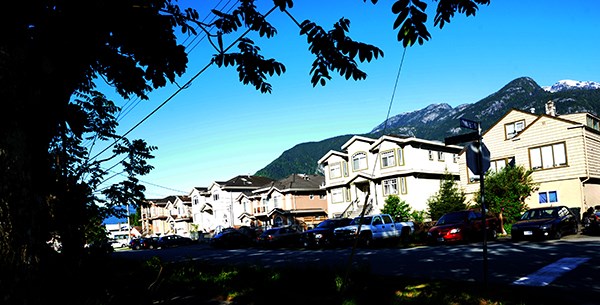Real estate prices in Squamish have risen 11.6 per cent in the past 12 months, according to the latest figures from the Real Estate Board of Greater Vancouver.
The board’s April report also shows Squamish prices have spiked 40.2 per cent in the past 10 years.
The benchmark price for a residential home in Squamish is now $436,700. That’s a composite, reflecting a typical single-family house at $570,000, a townhouse at $372,800 and an apartment at $272,900.
While the prices remain much lower than those in Greater Vancouver, where the benchmark home is now $673,000 and single-family house is $1.1 million, the rise in Squamish prices is both good news and bad news, says Housing Task Force chair Councillor Jason Blackman-Wulff.
The household income figures from the 2011 census – the most recent numbers available – pegged the household median income here at $57,000. Housing costs should take up only 25 to 30 per cent of income to be affordable.
“That would show that housing is increasingly becoming out of reach,” Blackman-Wulff said in an interview with The Squamish Chief.
“Things are definitely starting to heat up,” he said. “I’m not completely surprised, given the attention our community has received, as well as the larger trend in the Lower Mainland market. We’ve been getting more attention from the development community.”
Blackman-Wulff said it’s important that policies are in place to ensure there is housing across the spectrum to serve different needs. The District of Squamish does have policy in place to support laneway houses and secondary suites, for example, he said, “but there hasn’t been a lot of uptake in terms of legal suites.”
“We are going to look at why that is happening,” he said. “Can the district make it easier for single-family homeowners to build a suite?”
Single-family homes have seen the largest spike in the past 10 years, up 47.9 per cent, making mortgage payments on houses unaffordable for many who do not already have significant wealth.
For example, for a 25-year mortgage of 4.49 per cent on a $570,000 house, with 10 per cent down, payments would be about $2,800 per month. To afford that under the 30 per cent guideline, you’d need to earn about $112,000 – twice the median income.
But do families need a house? That’s the big question for people of Blackman-Wulff’s generation. He is 34 and says many are happier with smaller spaces than what their parents had. “For my parents’ generation, the ideal was a single-family home with a yard. In my generation, we don’t necessarily want lots of yard work, and we are OK with a smaller space.”
Having access to transit and safe cycling routes also reduces pressure on the family budget by eliminating the need for multiple vehicles, he said.
The task force, which met for the first time on May 6, is expected to make “actionable” recommendations to council in six to nine months, he said. “As this building boom happens, the goal is to take the right steps before we are in a position that we get too far behind,” he said.
He noted the rise in prices is double-edged sword. “It’s definitely good news in terms of it spurs more economic activity for builders and people in the trades… but if it gets beyond the median income in Squamish, it creates issues,” he explained.
“We have to make sure we have good quality jobs for people here so that people can earn income that provides them with access to housing.”



